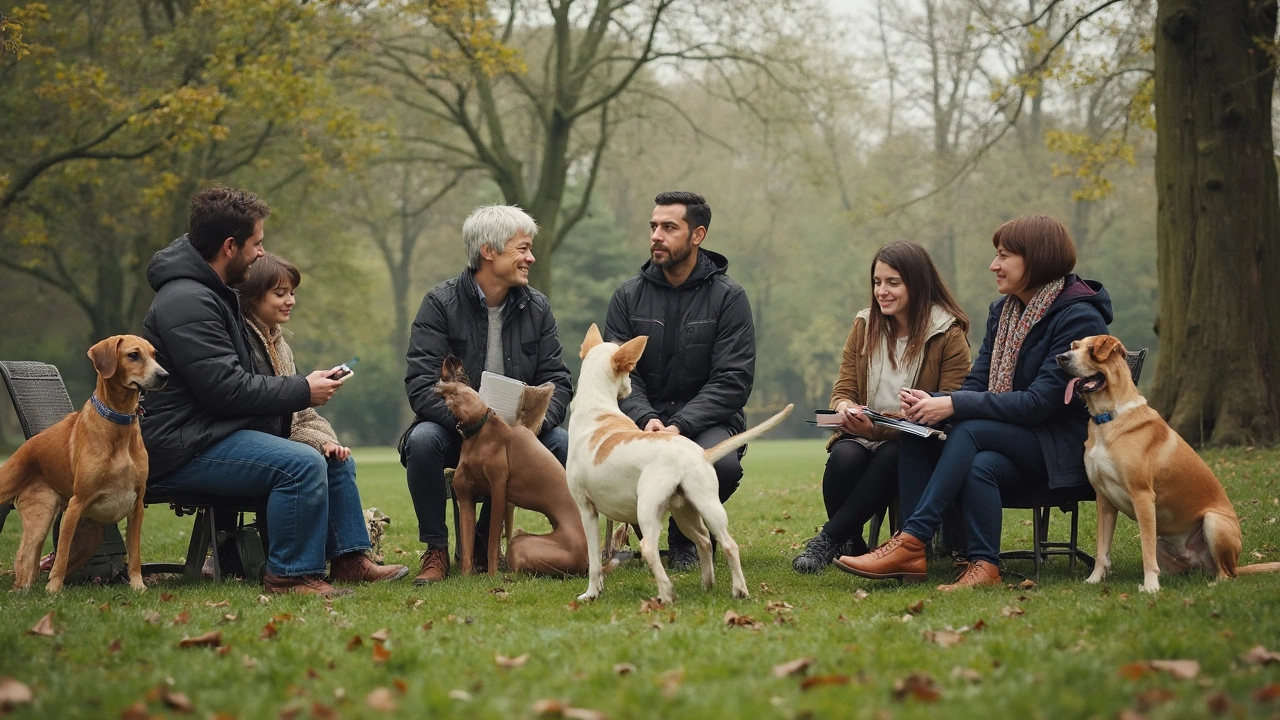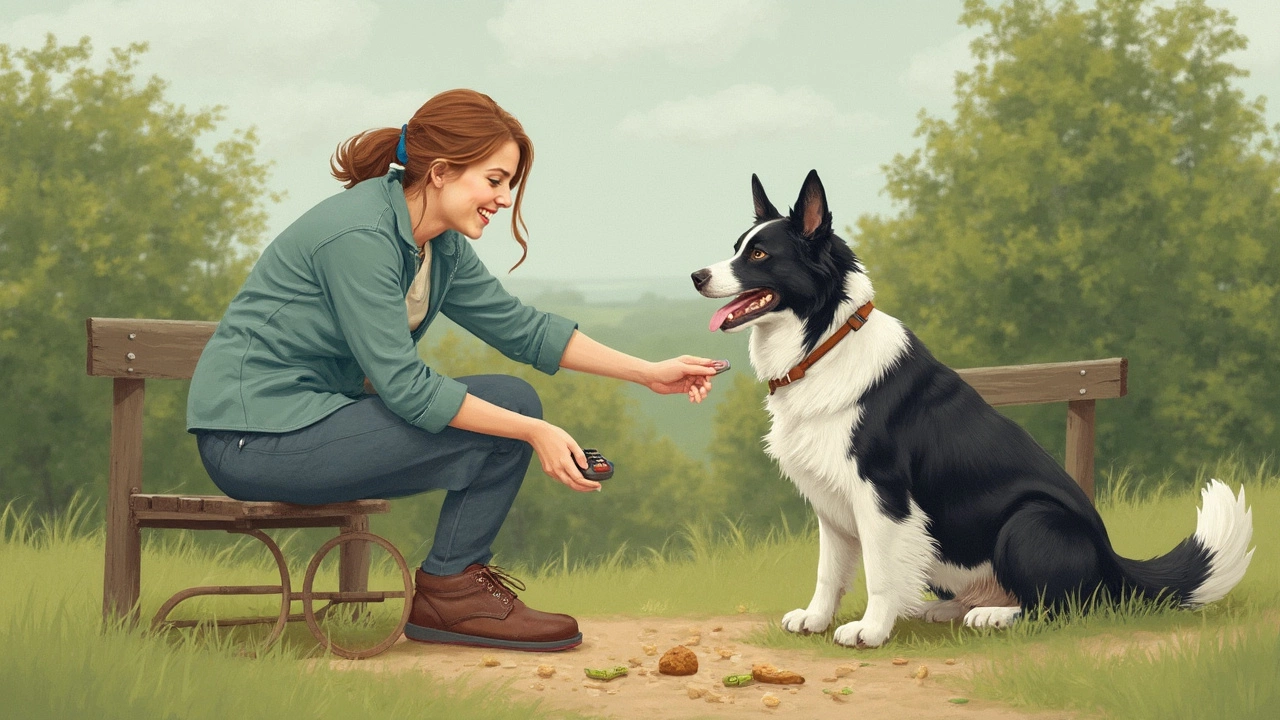If you've ever wondered how pro dog trainers actually work with stubborn or tough-to-train dogs, shock collars might have come up in your search. There’s a lot of talk online, and honestly, it can get confusing. Some swear by these tools. Others say no way. So what’s the deal—are shock collars just a last resort, or are they still common in the training world?
Here’s the short answer: a few trainers still use shock collars, but things are changing fast. Most certified trainers these days lean toward kinder, science-based ways to teach dogs. That means more treats, play, and teamwork—less punishment and fear. In fact, a lot of the biggest organizations in dog training recommend staying away from shock collars altogether.
That said, you’ll still see some trainers—especially in fields like police or hunting dogs—reaching for these collars. But even there, people are asking tougher questions. Do they really work better? What does it do to the dog’s confidence and trust? It’s not just about results. It’s about the dog’s whole experience, and more owners are looking for better, happier ways to train.
- The Basics of Shock Collars
- Why Some Trainers Use Shock Collars
- Modern Training: The Shift Toward Positive Methods
- Risks and Results: What Shock Collars Do to Dogs
- Tips for Dog Owners Who Want the Best for Their Dog
The Basics of Shock Collars
Shock collars—also called e-collars or electronic training collars—deliver a small electric signal to a dog’s neck when triggered. They usually come with a few buttons on a remote. You press one, and the collar reacts. Settings often let owners pick intensity from just a buzzing vibration to an actual zap.
The idea behind these collars is to interrupt unwanted behavior instantly—think barking, jumping, or chasing. They’ve been around since the 1960s, originally used mostly for hunting and working dogs. Today, you'll see them for everything from neighborhood walks to more advanced obedience drills, but debates over their safety never seem to end.
- Most collars can give off three types of feedback: a beep, a vibration, or a static “shock.”
- The shock lasts only a second or two, but it’s enough to startle most dogs.
- Not every collar feels the same—some are much stronger than others, and there is no totally universal standard for strength.
- Some modern shock collars track how often the button’s pushed and even send data to a phone, in case you want to monitor your training style.
The main shock collars types you’ll run into fall into three buckets:
- Remote-controlled: You hit the button when you see behavior you don’t like.
- Automatic bark collars: These activate whenever they detect barking, no human input needed.
- Containment systems: Think "invisible fences." The collar zaps if the dog crosses a line in the yard.
To give you an idea of how often these devices come up, here’s a look at usage trends in dog training over the past decade:
| Year | Estimated US Households Using Shock Collars | Percent of Certified Trainers Using Regularly |
|---|---|---|
| 2015 | 960,000 | ~12% |
| 2020 | 860,000 | ~9% |
| 2024 | 790,000 | ~7% |
Even with all the tech, it’s not a magic fix. Timing and understanding your dog’s reaction matter a ton, so misuse is pretty common. That’s why you see so many pros warning folks to learn everything they can before even thinking about these collars. Training isn’t just about stopping bad habits—it should also build a better relationship between you and your pup.
Why Some Trainers Use Shock Collars
Shock collars can be a touchy subject, but let’s talk about why a few trainers still use them in certain situations. For starters, these collars give an instant response, which some see as a way to interrupt dangerous or stubborn behaviors. Instead of waiting for a dog to come back when called, a trainer might use a shock collar to grab the dog’s attention if they’re running toward a busy street or ignoring recall.
Some trainers working with police, military, or hunting dogs say shock collars help reinforce commands when the dog is far away and voice cues just don’t cut it. For behaviors like chasing livestock, digging under fences, or aggression, a shock collar can deliver an immediate consequence, and that’s the main draw for people who still use them.
Here are the most common reasons trainers give for using shock collars:
- Stopping risky behaviors quickly, like chasing cars or livestock
- Training at a distance, where a leash or voice command isn’t enough
- Emergency situations where safety is the priority
- Correcting stubborn or strong-willed dogs that don’t respond to other tools
But just because they’re sometimes used doesn’t mean there’s a free pass. There are big debates in the dog world, especially since a lot of research points to risks—like increased fear or anxiety. For context, here’s how trainers view their use, according to a survey published in 2023:
| Reason for Using Shock Collars | % of Trainers Who Agree |
|---|---|
| Only for serious behavior issues | 38% |
| Last resort after other methods | 34% |
| Routine obedience training | 6% |
| Never use at all | 48% |
Today, even trainers who still turn to shock collars usually combine them with food rewards and praise, and they’re careful with the power settings. The focus is starting to shift toward safety and well-being, with fewer pros reaching for these tools as their first choice.
If you’re thinking about your own dog, the most important thing is to choose a method that builds trust and doesn’t harm your pup’s confidence—or your bond. Every dog is different, and training should match their needs and personality. If someone pushes a shock collar right away to fix every problem, that’s a huge red flag.
Of all the dog training gear out there, shock collars create the most noise for a reason. Asking direct questions and checking a trainer’s credentials can save you—and your dog—a lot of trouble down the road.

Modern Training: The Shift Toward Positive Methods
Dog training has come a long way, and there’s a huge push for trainers to ditch old-school punishment methods. Instead, most pros now focus on positive reinforcement—rewarding dogs for doing the right thing and setting them up for success. Why the big switch? Research shows dogs learn faster and feel more confident when training feels fun and safe instead of stressful.
Here’s a fact: According to a 2020 survey by the Association of Professional Dog Trainers, over 70% of trainers reported they use positive reinforcement as their main method. It’s not just about being kind—it actually works better for most dogs, especially pets.
- shock collars are getting phased out in many dog training schools, replaced with lots of treats, toys, and praise.
- Major organizations, like the American Veterinary Society of Animal Behavior, strongly recommend reward-based methods because science backs up the benefits.
- Modern training is not just for puppies. Even tricky adult dogs and rescues respond well to this kinder approach.
Positive reinforcement also helps strengthen the bond between a dog and their owner. Dogs trust you more if they see you as the person who makes good things happen. There’s no fear, just clear communication.
Let’s look at a quick comparison:
| Method | Main Tools Used | Impact on Dog |
|---|---|---|
| Old-School Punishment | Shock collars, prong collars, yelling | Fear, stress, quick fixes, possible fallout (like aggression) |
| Modern Positive Training | Treats, toys, clickers, praise | Confidence, trust, long-lasting learning, happier dogs |
Here’s a simple tip anyone can try: Instead of waiting for your dog to mess up, catch them doing something right and reward it. Sounds basic, but it changes how dogs behave. When you focus on the good, you’ll notice more of it. It’s all about creating habits you both appreciate.
Trainers all over the world are proving that you don’t need fear to make a dog listen. You just need patience, rewards, and a little creativity.
Risks and Results: What Shock Collars Do to Dogs
Let’s get straight to it—shock collars can change a dog’s behavior, but not always in the way you’d expect or really want. The goal is usually to stop things like barking, jumping, or chasing, but the results can be mixed and sometimes flat-out risky for your dog’s well-being.
Here’s what research and dog pros have seen:
- Shock collars work by giving the dog an electric zap, vibration, or beep to stop unwanted actions.
- Many dogs stop the unwanted behavior fast, but they often don’t know what they should do instead.
- Some dogs get anxious or fearful, especially if the shock happens when they’re not expecting it.
- Other side effects: stress, hiding, or acting aggressive—even after the collar comes off.
A survey by the British Small Animal Veterinary Association showed that dogs trained with shock collars were twice as likely to show signs of stress—like cowering or yelping—compared to dogs trained with reward-based methods. Some studies even found that the dogs trained with shocks avoided their owners or reacted with more barking and restlessness later.
Here’s a bite-sized comparison of risk between different training methods:
| Training Method | Stress Signs (%) | Rate of Problem Behaviors Later |
|---|---|---|
| Shock Collars | 30% | Higher |
| Treat-Based | 12% | Lower |
There’s also the issue of how these collars are used. Timing and strength matter a ton. Too strong? You scare the dog, maybe even cause pain or burns. Not fast with the button? The dog links the shock to the wrong thing—now you’ve got a confused, stressed-out pup.
Most trainers today try everything else before picking up a shock collar, and a lot refuse to use them at all. If you still want to use one, talk to a certified trainer who can show you the safest way. Better yet, ask about positive options. Your dog’s confidence and happiness are worth it.

Tips for Dog Owners Who Want the Best for Their Dog
If you're looking out for your dog's happiness and success, you want to make smart choices about training methods. Getting through all the noise about tools like shock collars can be a headache, but having real info helps.
First thing: the American Veterinary Society of Animal Behavior and the Association of Professional Dog Trainers both recommend using positive reinforcement before ever considering aversive tools. Positive reinforcement just means you reward the stuff you want your dog to do—treats, toys, attention, walks. No need for fear or pain.
Check out some real numbers. A 2020 UK study found dogs trained with reward-based methods were 2.8 times less likely to show stress compared to those trained with shock collars. And, 70% of owners using treats found it just as effective for tough behaviors.
| Training Method | Stress Signs in Dogs | Training Success Rate |
|---|---|---|
| Shock Collar | Higher | Moderate |
| Rewards (Treats/Play) | Lower | High |
So what can you do right now?
- Find a trainer who uses reward-based or "force-free" methods—ask them about their certifications and what tools they use.
- Learn basic cues like "sit," "stay," and "leave it" at home with treats and patience. That’s usually enough for 90% of dogs.
- If you’re struggling with a big problem like aggression, talk to a certified behaviorist—not just someone who promises “quick fixes.”
- Watch out for trainers or products that push "guaranteed results" or use heavy-handed tactics. Dogs aren’t robots—each one learns a bit differently.
- Read your dog’s body language. If your pup looks scared, shuts down, or avoids you, your method isn’t working for them. Change things up.
Quick heads-up: Countries like Germany, Sweden, and Switzerland have even banned shock collars because of the risks. The trend worldwide is clear—positive training is safer and works just as well, without the downsides.
Stick with patience and reward-based training, and you’ll keep your dog’s tail wagging. Your bond gets stronger, you avoid fallout later, and you’ll feel way better about your choices.





